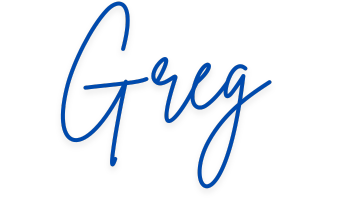Level Up Your Communication Game!
Help Evelyn in this Scenario-Based eLearning Experience
This concept project helps developers improve communications as they enhance new product feature rollouts.
Audience: Product developers working with designers in corporate technology and product development settings.
Responsibilities: Instructional Design, eLearning Development, Storyboarding, Action mapping, Scriptwriting.
Tools: Canva, Articulate Storyline 360, MindMeister, Figma, and Midjourney.
The Problem & Solution
A fictitious, large grocery client, experiencing problems with recent application rollouts, wants to enhance the customer experience with their technology products. A key issue is the communication breakdown between designers and developers resulting in functional deficiencies in released products.
The solution I proposed is a scenario-based e-learning program designed to improve developer-designer communication, fostering both engagement and effective behavioral change.
My Process
Following a consultation with my Subject Matter Expert (SME) to define and articulate the performance challenge, I started what would be a multi-faceted development process. This process included the creation of an action map in MindMeister, the development of a text-based storyboard, and the design of visual mockups in Figma. Asset creation was facilitated through Canva and Midjourney, culminating in the final product development within Articulate Storyline 360.
Figure 1. This Action Map is a collaborative tool that helps find the best solution to the performance problem.
Action Map
Utilizing Kathy Moore's "Map It" framework, I developed an action map in collaboration with the SME. Through this process, we efficiently identified communication and collaboration as the core performance gap, aligning it with a clearly defined business objective. Subsequently, we delineated the high-impact behavioral modifications necessary to achieve measurable improvement.
Text-based Storyboard
I designed the script and storyboard to facilitate an immersive, scenario-based learning experience, enabling users to directly experience the outcomes of various interpersonal responses. To enhance the learning process, a mentor character was integrated to provide targeted guidance and contextual hints at critical decision points.
Figure 2. This sample from my storyboard helps streamline the development process in Storyline 360.
Visual Mockups
As the script evolved, it became apparent that the narrative involved interpersonal interactions through digital messaging and meeting dynamics. Consequently, I shifted the visual strategy towards an action-oriented comic book aesthetic to maximize audience engagement. This design direction, which emerged during the wireframing phase, aimed to create a more engaging and energetic user experience.
Midjourney allows a user to develop prompts to create AI-generated images in the same way ChatGPT generates words based on a prompt. I used Midjourney to develop characters and locations. The characters I developed could then be referenced to create consistent characters throughout the project. This saved me a TON of time and money by not having to hire an artist to get the consistent character images I needed.
Figure 3. These visual mockups in Figma helped visualize the final development and ensure quality and coherence.
Full Development
I created and refined characters and scenes within Midjourney through an extensive iterative process. Subsequently, the assets were integrated into Articulate Storyline 360, informed by detailed feedback on pacing and visual composition.
Further iterations were conducted to enhance narrative clarity and effectively convey character emotions. These refinements aimed to optimize the user experience, introducing a degree of playful engagement while maintaining adherence to the established narrative structure.
Figure 4. This is one of the characters developed in Midjourney and used throughout the scenario.
Results and Takeaways
Midjourney allows users to create AI-generated images in the same way ChatGPT generates words. Though the process is improving, maintaining character consistency across iterations within Midjourney proved to be a significant challenge, requiring substantial time and refinement. However, the feedback regarding both character portrayal and the overall comic book aesthetic has been notably positive. The incorporation of light-hearted elements and subtle humor was successfully conveyed and favorably received by reviewers.
A key learning from this project was the efficacy of adopting a "movie shoot" methodology for character development within Midjourney. This approach involved systematically generating all necessary assets for a specific scene and location before proceeding to the next. This strategic batching of prompts streamlined the asset creation process and contributed to a more efficient workflow.





